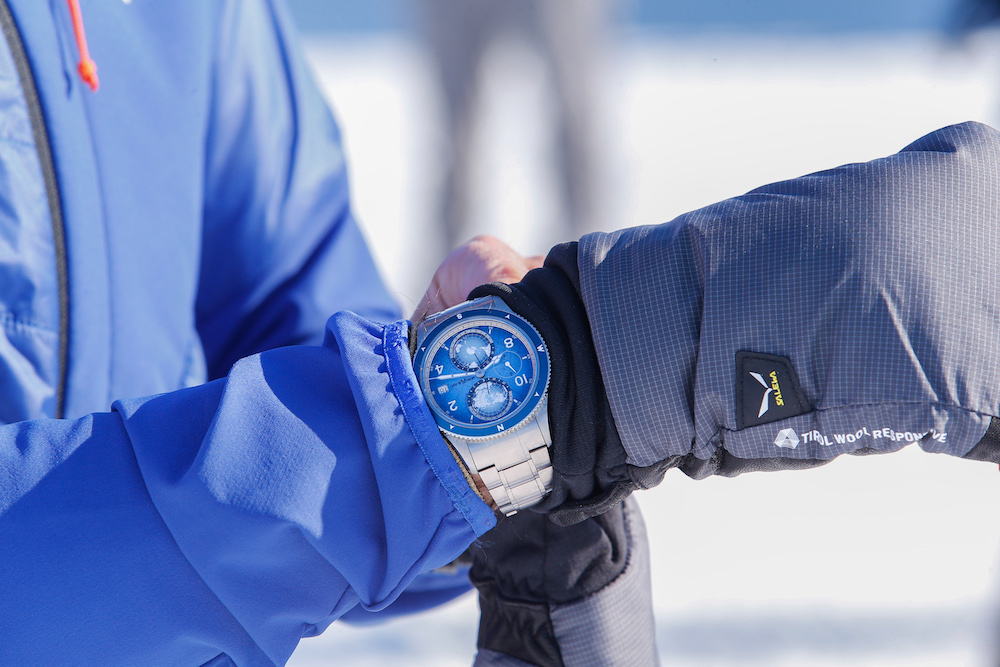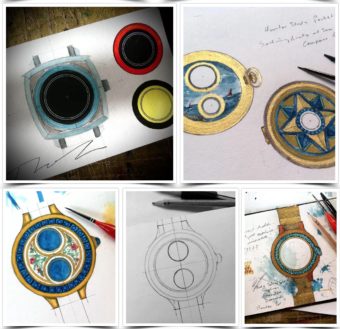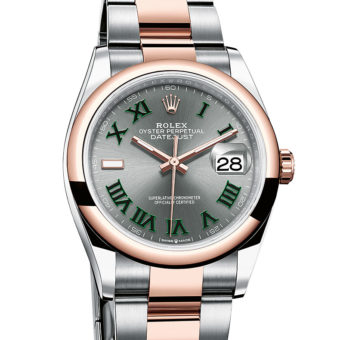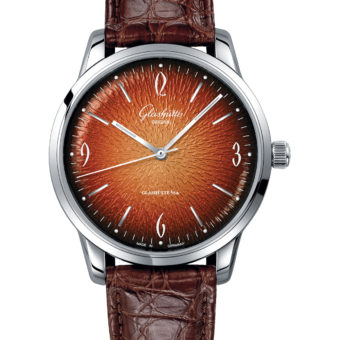Many watches are created for the most demanding circumstances, yet they hardly find themselves in a situation where their qualities are actually utilized. For Montblanc, this was one reason to take the 1858 Geosphere 0 Oxygen through its paces on the Arctic. There, alpinist Simon Messner, son of Reinhold Messner, who crossed Antarctica on foot in 1989, and global managing director of Montblanc’s watch division, Laurent Lecamp, participated in the Antarctic Ice Marathon. WatchTime’s Editor-at-Large Martin Green talked with both about their experience and the performance of the 1858 Geosphere 0 Oxygen.

Martin Green: You were born in the year that your father crossed Antarctica on foot. Is this also the inspiration to participate in the Antarctic Ice Marathon?
Simon Messner: That’s a funny coincidence, I would say. My father, Reinhold, completed the longitudinal crossing of Antarctica by foot on February 12, 1990; it took him and his partner Arved Fuchs 92 days to cover the 2.800 km. I was born in November of the same year. Of course this inspired me, but I also believe that life is made up of possibilities. You can take advantage of these opportunities, or not – that is up to you. For me, the Antarctic Ice Marathon was a great way to experience myself, especially my willpower and my body. I got most of my motivation from the question: can I do this?
What are the biggest challenges that you face when participating?
During the marathon on December 13th on the Union Glacier in Antarctica, we had to deal with strong winds that even increased during the race and temperatures of -25 to -30°C. In addition, the wind had caused snow drifts, which made every step unpredictable. I found it challenging to maintain my concentration and towards the end of the run, I occasionally had the feeling that my lips were freezing due to the cold. But all in all, it was a great experience in one of the most pristine places on earth.

How do you train for such an endeavor?
Running uphill has always been part of my mountaineering and climbing training, so running itself was nothing new to me. However, the most I’ve run so far is 30km, meaning this was my first marathon ever. That’s why I started running longer distances six months ago and of course, tested the special running equipment in bad weather and on snow. Despite the thorough preparation, I was still pretty nervous before the run (laughs).
With most marathons, less is more, taking as little with you as possible and wearing clothing as light as possible. What equipment and clothes do you use for a marathon in the Arctic?
I know this, especially from high-altitude mountaineering – there, too, every gram counts. I used to even cut off the sewn-on textile care symbols from my down jackets and mountain pants to save a few grams! Nowadays, I’m not quite as extreme anymore.
During the marathon, it wasn’t only the weight that mattered to me, it was also important to create the perfect balance of mobility and warmth without sweating too much. The 1858 Geosphere 0 Oxygen South Pole watch that I wore on my wrist is made of titanium, which made it very light and comfortable to run with. I also wore several layers of clothing and special Scarpa running shoes. Altogether, it worked perfectly!

Laurent Lecamp adds his experience of this extraordinary event.
Martin Green: How did you prepare for the Antarctic Ice Marathon?
Laurent Lecamp: A marathon in extreme cold is prepared like any other marathon, but you need to do regular training in winter conditions, which means running in the cold and on unstable terrain, strengthening your ankle muscles and hydrating more than usual. I trained in the Swiss Valais, in the mountains that I love.
Running in extreme cold causes blood flow to decrease as a result of vasoconstriction of the arteries. As a result, oxygen transport is reduced, making speed performance more difficult.
How was it to take the Montblanc 1858 Geosphere 0 Oxygen into the environment it was created for?
It is truly a wonderful experience to test Montblanc creations in the environments that inspired the models, we have a strong story telling for this watch based on the incredible life experiences of our mark maker Reinhold Messner, we were able to prove to the whole world that the colors were not chosen at random and that the specificities of the 0 oxygen had all their importance in extreme environments.

What was the most profound experience that you had partaking in the Antarctic marathon?
The human experience and the sharing of emotions with Simon Messner was incredible. We were both in a pristine universe, in the middle of a wilderness, facing the summit that Reinold climbed in 1986, Mount Vinson (4,897 m), the highest point in Antarctica. We were both continuing the Messner story, accompanying Simon in the footsteps of his father.
How did you use your Montblanc during the marathon?
We set our watches to exactly the same time with Simon, then we were able to check after the race, having used them upwind in extreme conditions and with constant indirect shocks, that the results of our two timekeepers were perfectly identical.

Did you wear the watch on the bracelet or the textile strap? And how was your experience with this during the marathon?
I wore the watch on a metal strap and Simon on a textile strap, the choice is a matter of taste, these watches are not specific to running but dedicated to exploration, made of titanium, they are very light and comfortable to wear.
How important is it for Montblanc to test their watches for what they have been made for?
Over the last few years, we have put a lot of energy into developing highly technical products, including the 0 oxygen, and thanks to our mark makers, we can take them on the road and test them in addition to our numerous laboratory tests in real-life situations (Everest, Antarctica, etc.).
Will this experience of yourself and Simon Messner be used to create future versions of Montblanc watches?
Of course, when we were both facing the immensity of nature, looking at the mountains and trying to remember each name, I was strongly attracted by a color, something unique that I discovered thanks to this trip. Stay tuned.
For more info, visit Montblanc, here.






